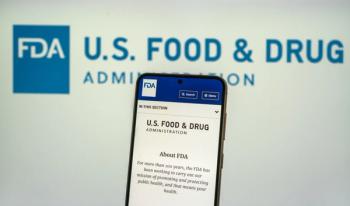
- December 2012 Heart Health
- Volume 78
- Issue 12
How Safe Are the Liquid Dispensing Devices You Provide to Patients?
Adapters for oral syringes undermine child-resistant packaging.
Adapters for oral syringes undermine child-resistant packaging.
Consumers at times receive or purchase an oral syringe along with prescription and OTC liquid medications. Oral syringes provide much greater accuracy when measuring liquids, so the Institute for Safe Medication Practices promotes their use, particularly when measuring doses for infants and children. But a recent incident illustrates an unintended consequence of using an oral syringe with a commonly available bottle adapter.
A child with supraventricular tachycardia was taking TAMBOCOR (flecainide) that had been compounded by a local pharmacy. The pharmacy properly dispensed the drug in a prescription bottle with a child-resistant cap. To facilitate removal and measurement of the suspension, they dispensed it with an oral syringe and a screw-on type bottle adapter. After using the adapter and oral syringe to measure out a dose, the family did not remove the adapter from the medicine bottle and replace it with the child-resistant cap before storing it in the refrigerator.
One evening, the family noticed the child coming up the stairs with a nearly empty bottle of the medicine in his hand. Apparently, the child went into the refrigerator to get a juice bottle but picked up the medicine bottle. He was able to access the suspension and drink most of it because the child-resistant cap was not on the bottle. The child was taken to a local hospital for treatment of the overdose, transferred to another hospital, and successfully treated.
This incident should serve as a warning to the health care industry and consumers that, in the home, external bottle adapters must be removed and replaced with the safety cap after each dose is prepared. Otherwise, a child may easily overdose on the medication, as in this case. Labeling on some oral syringes with adapters does not warn about this risk, nor does it say anything about removing the adapter and recapping the bottle with the child-resistant cap for storage.
For example, one commonly available oral syringe (EZY DOSE) is packaged with an adapter called a “DOSAGE-KORC” that can easily be removed by a child to gain access to the medication. A warning appears in a small font to recap the medication to prevent product instability, but no warning regarding accidental poisoning can be seen on the package. Also, this adapter does not allow the child-resistant cap to be replaced on the bottle unless it is removed.
Each of the above adapters has a hole in the middle to allow the bottle to be turned upside down to facilitate drawing the medication into an oral syringe. The screwed-on adapters may attract young children because they often look like the top of a sippy cup or infant bottle. Although medication may not easily flow via gravity from all the different forms of adapters, they are not child-resistant tops and may be removed by children, allowing access to the medication. Most often bottles containing the medication are plastic and may be able to be squeezed, enabling children to obtain a stream of medication from the container.
Health care professionals should be aware of the potential issues with the oral dispensers they recommend or dispense with liquid medications. Patients and caregivers must be educated on the safe use of these devices and reminded to always re-secure the child-resistant cap after each use. Drug and device manufacturers, as well as pharmacists and others, should distribute or dispense medications only with an oral syringe adapter that allows the bottle’s child-resistant cap to be replaced.
Some manufacturers of new OTC single-ingredient acetaminophen infant products are already doing this. Their bottles include adapters which restrict the flow of medication if not used with the included oral syringes, thus potentially preventing an overdose situation. Hopefully, the use of these adapters will expand to all infant products.
Dr. Gaunt is a medication safety analyst and the editor of ISMP Medication Safety Alert! Community/ Ambulatory Care Edition.
Articles in this issue
almost 13 years ago
Pharmacogenomics and the Most Commonly Prescribed Drugs of 2011almost 13 years ago
Improving Heart Health with Better Sleepalmost 13 years ago
Obstructive Sleep Apnea: An Important Wake-Up Callalmost 13 years ago
Can You Read These Rxs?almost 13 years ago
Case Studiesalmost 13 years ago
Systems Problems Among Roots of Tech-Related Medication Errorsalmost 13 years ago
Your Compounding Questions Answeredalmost 13 years ago
The Power of Words: A New Approach to Counselingalmost 13 years ago
Pharmacist Terminated in Violation of Public Policy?almost 13 years ago
New FDA Board to Handle Exclusivity DecisionsNewsletter
Stay informed on drug updates, treatment guidelines, and pharmacy practice trends—subscribe to Pharmacy Times for weekly clinical insights.



















































































































































































































